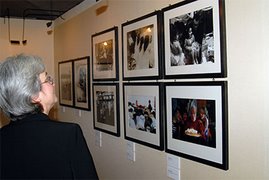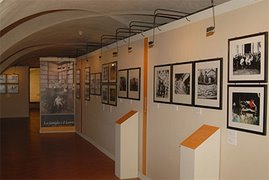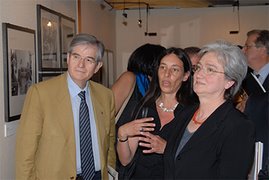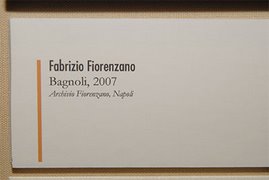Going somewhere in order to report on events with images requires a multi-faceted knowledge. But the first requirement is a deep humility. We should never forget that we are in a country as guests. Arrogance and bad behavior will never produce good results and we risk destroying all our efforts with a few inappropriate actions.
Moreover, it is necessary to be able to adapt and learn. Before arriving it is important to study and gather all possible information on the country's political and religious situation, past and contemporary history, and the cultural habits of its people.
The first phase is dedicated to the development of the information: Record personal stories and fragments of stories to help gather a more vivid picture of the history of a people and of their way of living.
Then there is the social context: Try, when possible, to put oneself in the clothes of those we are recording. We must be able to see the world through their eyes.
We, the Camera, and the Others
In order to be a good photojournalist, we should try to work with fundamental discretion. We should spend almost all our time unnoticed, to integrate ourselves with local people in order to create the possibility to shoot the most natural photographs. Everybody responds in different ways in front of a photographic lens. Some may be shy, some like to be photographed. In Cambodia, a child realizing that I was ready to aim the camera, turned herself towards me and, raising her arm, made me understand that she did not want to be photographed. We should consider our camera like a spy’s microphone and try to render it almost invisible. It must be used with rapidity and cleverness. When we absolutely want to photograph something that we find difficult to shoot in that moment, even though we receive a refusal, our mission is to try patiently to create the most opportune conditions in order to succeed. Cover the lens and try to establish a friendly rapport, with smiles and much patience. My experience teaches that with a bit of skill it is possible to overcome the distrust.
Autonomy and Independence
The freelance photographer is, by definition, autonomous and independent, but he has much more difficulty in placing his work than a photojournalist that works as a correspondent for a newspaper or for a photographic agency. The big difficulty derives from the economic aspect. Every freelancer is forced to finance his travels. All of this in order to hope to sell something. In compensation he can count on a total autonomy because nobody will ever tell him how to do his work.
An example of interference and lack of respect by an editor is represented by an episode of a beloved friend, a famous old Italian photo reporter who has worked for decades with many important national and international newspapers in war zones. He also traveled in the Cambodian jungle with the Khmer Rouge and often worked in the hottest places around the world.
He was abroad during a conflict and his director called him at the hotel asking him to take a picture that he had dreamt during the night. He wanted an image of a woman escaping with a child in her arms and in the background a church in flames, and he wanted the picture taken at sunset! Imagine finding a church in flames, then spotting a crying and fleeing woman with a child in her arms and having to say to the lady: "Excuse me madam, could you escape from this side so that I can better frame the church which I have set on fire? And escape this evening, not now, I mean around 7 p.m. so that the flames may be better highlighted against the twilight!" The editor had forgotten that this was a land of a conflict, not a photo studio. The photographer, offended by the lack of professionalism, "fired" his editor. Nobody, more than a photographer, can know, once in a place, what to do, how to do it and, above all, when to do it.





No comments:
Post a Comment